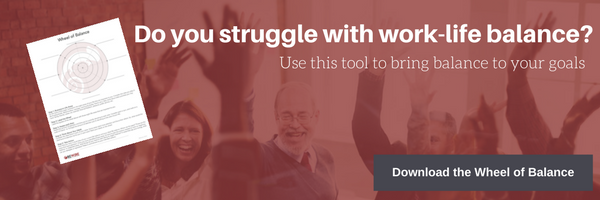
I have spent the better part of the last 17 years with the vocation of helping people improve —improve their lives, their businesses, their sales, their teams, etc. My primary way of working with people has been what some refer to as “coaching.” I don’t particularly attach myself to that category today, but if it helps people understand what we do, then so be it.
Here at Rewire, we have been developing our own home-grown curriculum with regard to this profession and I recently came across a model that I think is amazingly useful as it pertains to helping others. So if you are a leader (in almost any capacity) I think this model will be very helpful as you seek to be an instrument of change. I can’t say that I read it in a scientific journal or heard about it at the “Annual Conference of Next-Level Coaching” (I don't even know if that's a real conference), but I am an avid student of anyone who works with others and insight sometimes comes from surprising directions. And this one in particular has been a helpful paradigm as I discern how to work with others and how to help clients lead.
I can boil it down to a 3-step process. And the process basically came from the back of an old album cover from the late great guitar player, Michael Hedges (see, no medical journal subscription required). In short, Michael humbly said that he was thankful for three teachers (leaders, if you will) in his work:
- The first for teaching him the fundamentals.
- The second for allowing him to go on his own way.
- The third for asking where he was going and why.
On the surface, this may seem like a simple gratitude, but upon further review there is a brilliant methodology for working with people.
You see, sometimes we need the fundamentals. We may need to go back to the beginning. Or, in the case of a new vocation, we need to be taught from the ground up.
After we have the fundamentals, however, we need to have constructive space to go on our own way; to be released, freed. We need to use the fundamentals that we have been taught, but with the autonomy to make mistakes so we can learn what we can and cannot do. There is nothing as fruitless or monotonous as being repeatedly taught the fundamentals when what we really need is to be released.
Finally, there is a time when we need to have the wisdom and patience to ask people where they are going and why? I suppose this can be a little like accountability, but I view it as more of genuine curiosity and encouragement.
I implore you to re-read those three strategies and ask yourself where and when and with whom you need to deploy them.
It is also possible that you look at the strategies and have the courage to ask where you need each of the three in your own business and in your own life. There are very likely areas where each of the three would serve your growth well.
In the spirit of this article, I close with thanks for my mentor, Jack, for enlightening me to this model and freeing me to use it. Thanks, Jack.




